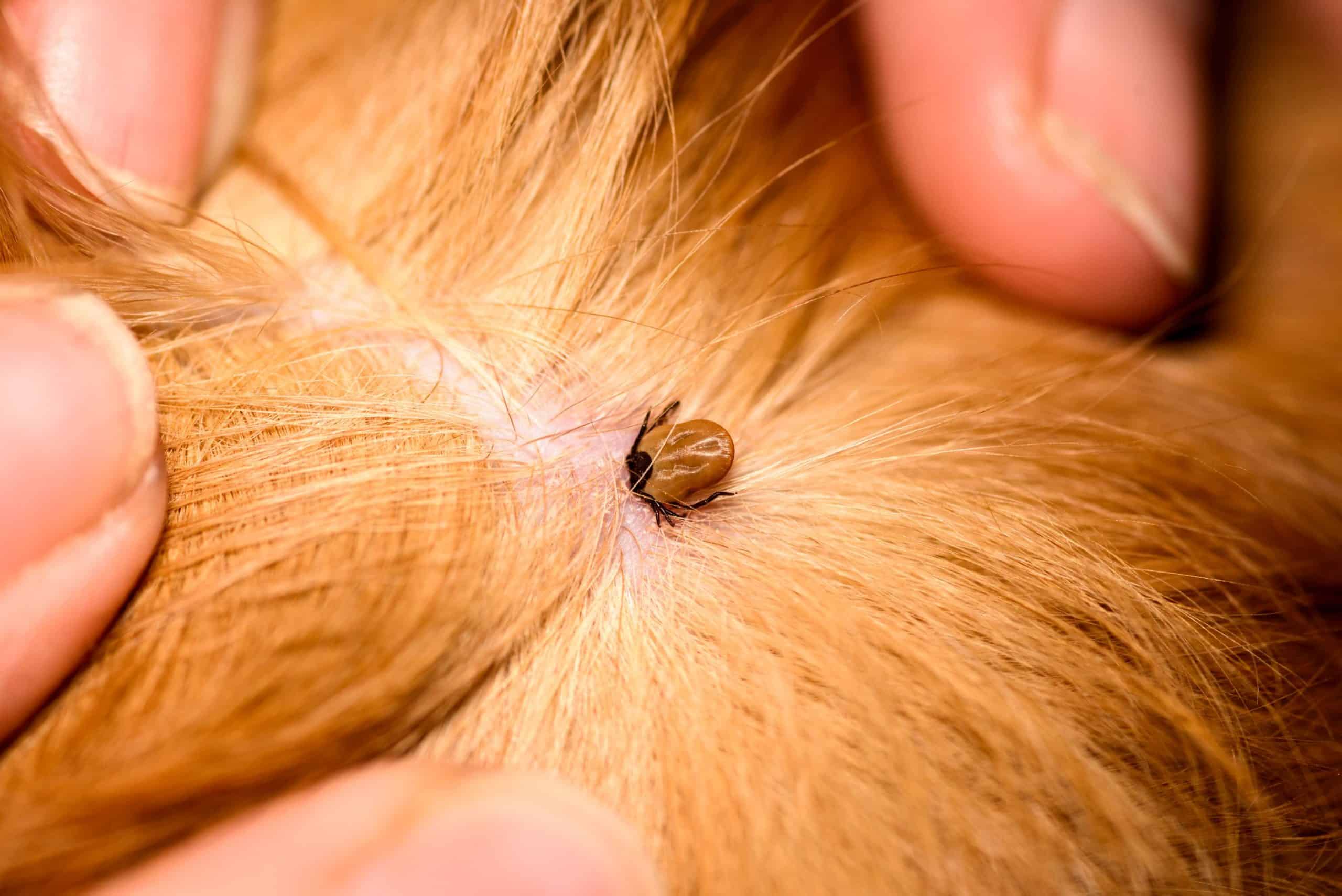Ticks, Lyme Disease, and the Risks to Your Pet

In Michigan and other parts of the Midwest and Northeast, we are literally crawling with ticks. Those who like to spend time outdoors with their dogs understand the high prevalence of these canine Lyme disease carrying pests.
And, while there is no fool-proof way to evade the tiny invaders, there are some precautions you can take to protect yourself and your pooch from the risks.
The first place to begin is education and awareness.
Talking About Lyme Disease
Canine Lyme disease, the most common vector-borne illness in the US, is an infection transmitted by the deer tick—specifically, the subspecies Ixodes scapularis. Lyme disease affects humans, of course, but also our dog companions and is becoming a much greater problem over the past 10 years.
Lyme disease can also be found in felines, but it is rarer because cats tend to be fastidious and do not allow for such pests to attach and remain.
In dogs, symptoms of the infection often show as lameness, lethargy, joint swelling, arthritis, fever, and blood abnormalities. Left untreated, the disease can compromise the kidneys, especially among Labrador and Golden Retrievers. In some cases, dogs show no signs of contracting the disease at all, which is why prevention is so important.
What is My Dog’s Risk?
Unfortunately, there is no reliable data capture for the exact number of positive Lyme disease cases among dogs. However, we do know that dogs testing positive for Lyme almost always (as in >95% of the time) come from or reside within one of the Northeastern or Upper Midwestern states.
Obviously, dogs who spend a great deal of time outdoors, and especially in natural, wooded areas, are more likely to become exposed. However, all dogs are susceptible and any warm blooded animal, humans included, can be a host for the tick to enter the home.
Deer ticks can also actively feed on a host through all three stages of their development: larvae, nymphs, and adults.
How is it Treated?
Treatment for Canine Lyme disease in canines generally includes antibiotics and anti-inflammatories (when joint inflammation occurs). The limitation is that current tests only indicate the presence of exposure to the disease, as opposed to your pet’s response to it or symptoms that may develop. This is why treatment can often be complex and occur over weeks, if not months.
Preventing Lyme Disease
As with most infectious and/or vector-borne illnesses, prevention is your greatest ally. Although we have spoken mainly of the impact of Lyme on dogs, it’s important to keep both cats and dogs on a year-round flea and tick preventive.
In addition to tick control, there is now a vaccine specific to Lyme borreliosis in dogs. Because we live in a high-risk region, this vaccine may be recommended as a part of your dog’s vaccine protocol.
Other important steps to prevention include thoroughly inspecting your pet for the presence of ticks each evening or when you return from outside. If you find one, use tweezers and get as close to the head as possible, grasping the tick firmly, while lifting up and away in a steady motion. Avoid twisting the tick while you remove it, and dispose of the tick by flushing it down the toilet (or saving it in alcohol if you would like to have it tested).
Ticks seem to be one of the nastier aspects of outdoor recreation we have to contend with, yet it is possible to protect yourself and your pets from this pest. If your pet has not been vaccinated or isn’t currently on a preventive, please call to schedule a wellness examination and let us help you take the bite out of summer.
